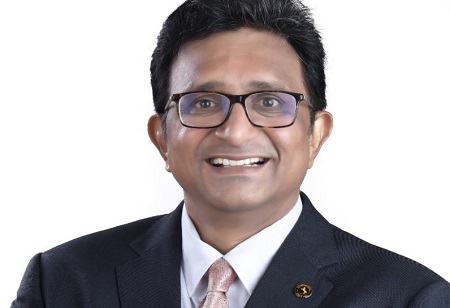
Prashanth Doreswamy, President & CEO, Continental India, in an interaction with Industry Outlook shares his views on how the adoption of autonomous mobility for public transportation will transform the future of public transport.
How do you see the adoption of autonomous mobility for public transportation? How will it change the future of public transport?
We need to understand <b>autonomous mobility</b> in terms of assisted, automated, and autonomous functions. But in India, at present, we are seeing only assisted functions. When you talk about automated or autonomous functions, even some of the developed countries are still facing challenges in these segments. Therefore, as urban mobility continues to grow rapidly, mobility is considered to be the backbone of modern city planning.
Today, over 1.2 billion people spend more than an hour in their vehicles, and most of the time is spent in traffic jams. In one of the surveys conducted in the US, a couple of years ago, it was found that most participants stated, if their travel time to the office and back, is reduced by 50%, they were ready to take a hit in their salary by about 10%. There is a lot of time wasted in traveling and the volume of traffic leads to increased emissions and air pollution which also, unfortunately, has a negative influence on life expectancy. At the same time, our cities are continuously growing, and this results in a rise in traffic. At present out of a 7.5 billion population, nearly 55% of the population is residing in cities. And the projection is by 2050, we would be about 9.7 billion population, of which 70% will be residing in cities. Therefore, we can imagine the challenges that are going to be faced by the cities.
In the future, the adoption of autonomous mobility for public transport will be inevitable and will transform the mobility landscape and prove this to be beneficial by being efficient. If every vehicle is synchronized, the density of vehicles on the road also can be much more optimized. Today because of different driving patterns, and different speeds, we are not utilizing the efficient area of the road as well. Autonomous mobility will certainly help in that landscape as well. The automotive industry has been pushing boundaries in developing sophisticated technologies that make driving much more comfortable, convenient, and safe.
Although achieving the vision of autonomous driving or autonomous mobility for public transport is not far-fetched, we still need to take a calculated step. We should first start with, driver-assistive technologies, which could, certainly for countries like India, will make it much safer and bring down a lot of fatalities. At the same time, an equally supportive infrastructure also needs to be there for us to migrate to automated functions.
The second part is the connected infrastructure that forms the basis of autonomous mobility. The good part is India is also slowly migrating to 5G, which will be a crucial enabler technology for the future of mobility as well, in terms of providing significant network enhancements, and also how the technology can benefit from the real-time, high-speed networks. Because real-time communication between vehicles such as vehicle to vehicle, vehicle to infrastructure, and also with the number of connected devices will be possible because of the increased data speed. Today, cars are becoming much more sort of software-defined vehicles. And also, it's no more a vehicle, which takes you from point A to point B, it's rather becoming more of an extended IoT device.
Autonomous public transportation vehicles require advanced infrastructure and technology to operate efficiently. There is a need for high-definition maps, sensors, and other systems to enable autonomous public transportation vehicles to navigate roads and traffic safety. How can these requirements be met?
5G will play a crucial role in autonomous vehicles to incorporate certain safety measures. It will also be able to provide the passengers, especially in self-driving cars/autonomous cars with high-quality infotainment services, and will transform the overall driving experience. As the industry is shifting towards electrification, by 2030, there will be an increase in software-defined vehicles that will be connected to the Internet. The implementation of 5G technology in electric vehicles would not only help in terms of monitoring the battery levels and charging status but in locating the nearest charging station. Therefore, with 5G in India, there would be remarkable progress in the automotive industry with a lot of connected technologies.
The development of autonomous public transportation requires a stable regulatory framework to ensure compliance with existing laws and regulations. There need to be regulations covering issues such as safety, security, and liability. What is your take on this?
The regulatory framework should address several critical aspects such as vehicle safety, passenger safety, data privacy, and cyber security because a lot of data is being exchanged in the process. And in the event of any accident, there should be standards for testing and certification of these autonomous public transport systems to ensure that they continue to remain safe and reliable for the passenger. The regulatory framework should also address the data privacy concern that all of us have today which is to protect the consumer's personal information collected through various sources and systems. Furthermore, there should be guidelines for cybersecurity to prevent any cyber-attacks and we should ensure that there is enough safety for the systems that are used in the vehicle.
There should be clarity on the issue of liability - in the event of an autonomous vehicle meeting with an accident. With the introduction of autonomous public transport, liability could be a complex issue and there must be clear guidelines on who is responsible in case of accidents. Thus, a stable regulatory framework is certainly a necessity to ensure the safe and successful deployment of these autonomous public transport systems remain safe.
We use cookies to ensure you get the best experience on our website. Read more...